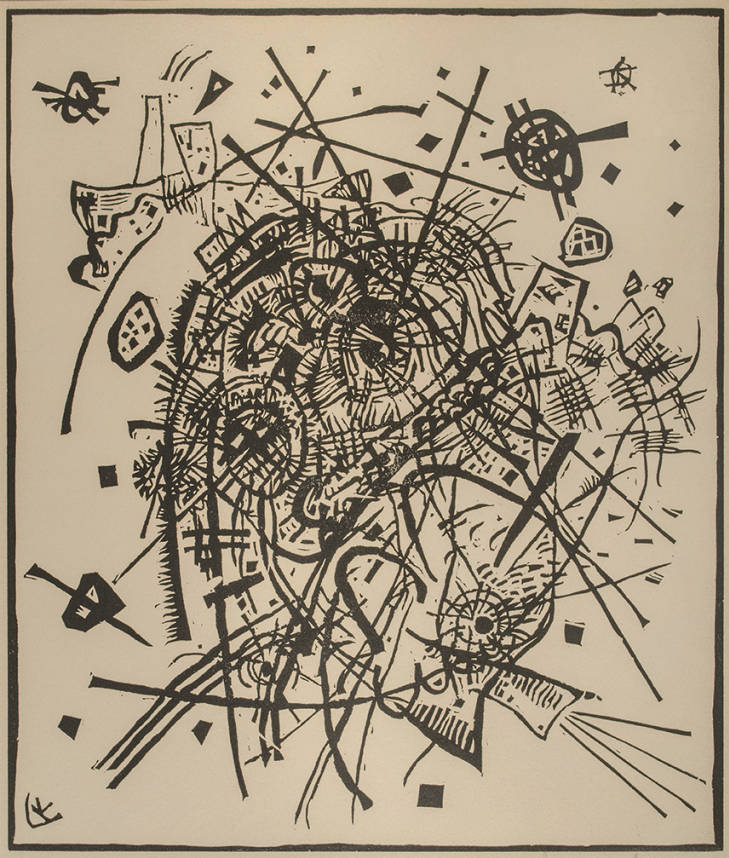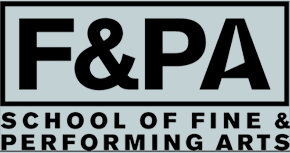
Small Worlds VIII
In 1922, while teaching at the Bauhaus, abstract painter Vassily Kandinsky (1866–1944) created the portfolio “Kleine Welten (Small Worlds),” including four prints in etching, woodcut, and lithography. The prints form a dialogue, each one functioning as a microcosm, as the title implies. At the Bauhaus, geometric shapes dominated Kandinsky’s oeuvre, as he developed his use of overlapping, flat planes and distinctly delineated forms.
The Dorsky holds Small Worlds VIII from this portfolio, which highlights Kandinsky’s use of the three techniques: drypoint, woodcut, and lithography. Drypoint created his sharp, precise lines; woodcut produced the texture and depth of the forms; and lithography gave the prints the smooth surface and aided the artist’s ability to add colors and deep marks to the prints. The combination of these printmaking techniques illustrates his ability to produce an energetic interaction of line and form. His lines overlap, and some forms squeeze together to build a frenzied scene at the center.
Kandinsky’s paintings and writing influenced future art movements, such as the Abstract Expressionists and Minimalists.

